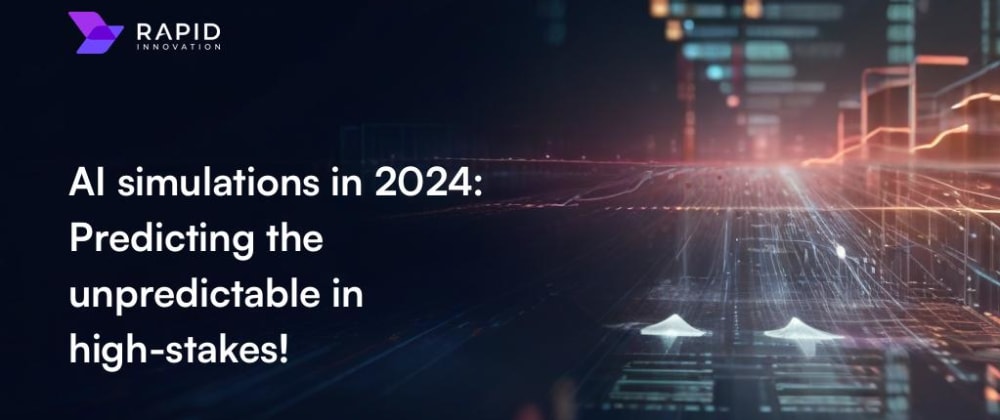AI-driven dynamic simulation represents a cutting-edge approach in the field
of simulation technology, integrating artificial intelligence to enhance the
accuracy and efficiency of simulations. This technology leverages AI to model
complex systems dynamically, adapting and learning from data in real-time. It
is used across various industries, including automotive, aerospace,
manufacturing, and healthcare, to optimize processes, predict system behaviors
under different scenarios, and improve decision-making.
1. Definition and Scope
AI-driven dynamic simulation refers to the use of artificial intelligence
techniques, such as machine learning and neural networks, to create
simulations that can learn and adapt over time. Unlike static simulations,
which operate under fixed conditions, dynamic simulations are designed to
evolve, offering a more realistic representation of complex, variable systems.
2. Importance in Predictive Analytics
AI-driven dynamic simulation plays a crucial role in predictive analytics by
enhancing the ability to forecast future events based on historical and real-
time data. This capability is particularly valuable in industries where
conditions change rapidly and decisions must be made quickly, such as finance,
healthcare, and manufacturing.
3. Overview of High-Stakes Environments
High-stakes environments are scenarios where the outcomes of decisions have
significant consequences, often involving substantial risk to human life,
financial assets, or strategic interests. These environments can range from
military operations and emergency response to critical healthcare decisions
and financial trading.
Core Technologies Behind AI-Driven Dynamic Simulation
1. Artificial Intelligence
Artificial Intelligence (AI) is a pivotal technology in modern dynamic
simulations, providing the capability to process and analyze large volumes of
data quickly and with high precision.
Machine Learning (ML) involves the use of data and algorithms to imitate the
way that humans learn, gradually improving its accuracy.
Deep Learning uses artificial neural networks with many layers to handle large
amounts of data and identify complex patterns.
2. Dynamic Modeling Techniques
Dynamic modeling techniques are crucial in understanding and predicting the
behavior of complex systems over time.
3. Integration of AI with Simulation Tools
The integration of AI with simulation tools marks a significant advancement,
enhancing the capabilities of various industries to predict, analyze, and
optimize processes.
Applications in Various Industries
1. Healthcare
In healthcare, AI technologies are improving patient care, efficiency, and the
accuracy of diagnoses and treatments.
2. Finance
The finance sector uses AI to automate complex processes such as credit
scoring, risk assessment, and fraud detection.
3. Aerospace
The aerospace industry leverages AI for improving fuel efficiency, reducing
environmental impact, and enhancing safety through simulations.
Case Studies
1. Reducing Medical Errors through Simulations
Medical simulations provide a risk-free environment for healthcare
professionals to practice and hone their skills, significantly reducing
errors.
2. Financial Risk Assessment Models
Financial risk assessment models use techniques like Monte Carlo simulations
to predict and mitigate potential losses.
3. Aircraft Simulation for Safety Enhancements
Aircraft simulations are critical for training pilots and improving flight
safety by replicating various flying conditions.
Challenges and Limitations
1. Data Privacy and Security
Data privacy and security are paramount concerns, requiring robust encryption
methods and secure data storage solutions.
2. High Computational Costs
The computational costs associated with processing large datasets or running
complex algorithms can be prohibitively high.
3. Skill Gap and Technical Complexity
The rapid evolution of technology has led to a significant skill gap in the
workforce, requiring continuous learning and development programs.
Future Trends and Predictions for 2024
1. Advancements in AI Algorithms
2024 is set to witness significant advancements in AI algorithms, focusing on
efficiency, ethics, and accessibility.
2. Increased Adoption in Emerging Markets
The increased adoption of technology in emerging markets is accelerating,
driven by affordable smartphones and internet access.
3. Ethical Considerations and Regulations
Ethical considerations and regulations are crucial for ensuring that
technological advancements respect human rights and dignity.
📣📣Drive innovation with intelligent AI and secure blockchain technology! Check
out how we can help your business grow!
Blockchain App Development
AI Software Development
Blockchain App Development AI Software
Development



















